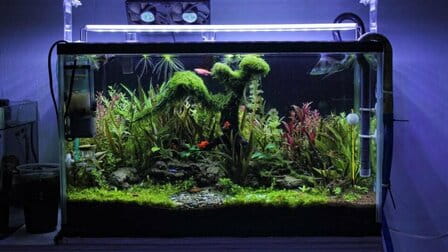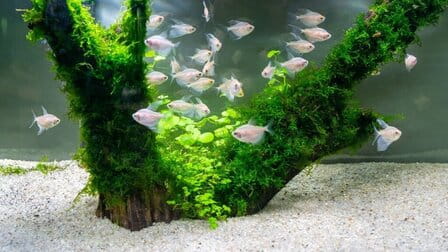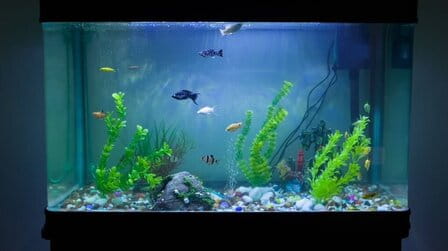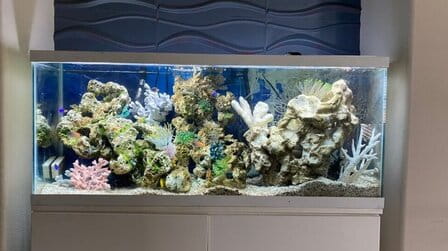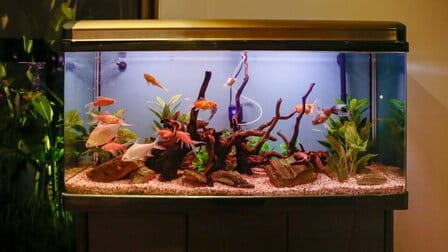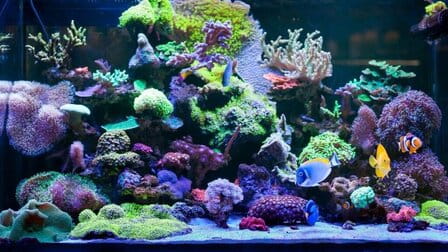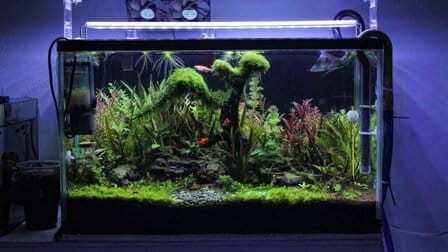Time is of the matter, so feel free to jump forward to that area of this article if you're seeking guidance on how to keep a fish tank warm without a heater due to an emergency. But if you came here to learn how to set up your aquarium without a heater permanently, you might be amazed at how simple this procedure is. The following are some steps on list how to keep aquarium warm without heater.
How to Keep Aquarium Warm Without Heater
Step 1: Rely on room temperature
Replying to the room is the first step on the list of how to keep the aquarium warm without a heater. The temperature of the room where your aquarium is located can play a significant role in maintaining the warmth of the water in your tank. If the room is consistently warm, this may be enough to keep the water at a suitable temperature for your fish and other aquatic animals.
It's important to note that the ideal water temperature for your aquarium will depend on the specific needs of your fish and other aquatic animals. Different species of fish and other aquatic animals have different temperature requirements, so it's important to research the specific needs of your pets.
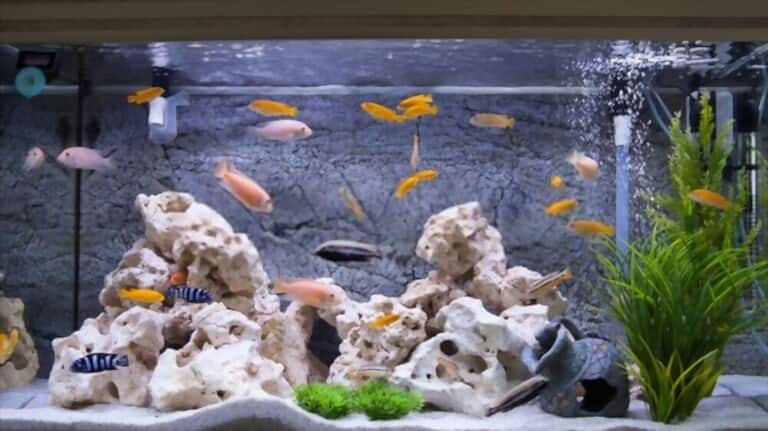
To rely on room temperature to maintain the warmth of your aquarium, you should ensure that the room temperature remains consistent. This means avoiding sudden temperature changes, such as opening windows or doors that may let in a draft.
You can also use a thermometer to monitor the water temperature in your aquarium regularly. If the temperature begins to drop, you may need to use other methods to maintain the warmth, such as covering the aquarium with a lid or using a heat lamp.
It's important to keep in mind that relying on room temperature alone may not be as reliable or precise as using a heater designed specifically for aquariums. Therefore, it's important to monitor the water temperature regularly to ensure it stays within a safe range. If you have concerns about the temperature or the health of your fish, it's always best to consult with a veterinarian or an experienced aquarium specialist.
Step 2: Be to position the aquarium correctly
The location of your aquarium can play an important role in maintaining the warmth of the water in the tank. Here are some tips to consider when positioning your aquarium:
- Avoid drafty areas: The aquarium should be placed in a location that is free from drafty areas. Drafts can cause sudden changes in temperature, which can be harmful to your fish and other aquatic animals.
- Avoid direct sunlight: Direct sunlight can cause fluctuations in the water temperature, and it can also encourage the growth of algae. Therefore, it's best to place your aquarium away from direct sunlight.
- Consider room temperature: As mentioned earlier, the room temperature can play a role in maintaining the warmth of the water in the aquarium. Therefore, you should consider the temperature of the room when positioning the aquarium.
- Consider the size of the aquarium: The size of the aquarium should also be taken into consideration when positioning it. A large aquarium may be difficult to move once it's filled with water, so it's important to choose the right location from the start.
- Consider accessibility: Finally, you should consider accessibility when positioning your aquarium. You'll need to be able to reach the aquarium easily for maintenance tasks such as water changes and cleaning.

By following these tips and positioning your aquarium correctly, you can help to maintain a consistent water temperature and create a healthy environment for your fish and other aquatic animals.
Step 3: Cover the aquarium
Covering the aquarium is the next step on the list of how to keep the aquarium warm without a heater. Covering your aquarium with a lid or cover can help to retain heat and keep the water warm. Here are some tips to consider when covering your aquarium:
- Choose the right material: The material you use to cover your aquarium should be suitable for use with water. Some options include a glass lid, plastic wrap, or a piece of acrylic.
- Leave room for air flow: It's important to leave some room for air flow when covering your aquarium. This will help to prevent the buildup of humidity and condensation, which can be harmful to your fish and other aquatic animals.
- Monitor the temperature: It's important to monitor the water temperature regularly when using a lid or cover. While it can help to retain heat, it can also cause the temperature to rise too high if the lid is not removed periodically.
- Consider the lighting: If you have a light fixture above your aquarium, you'll need to choose a cover material that allows light to pass through. A glass lid is a good option for this purpose.
- By covering your aquarium, you can help to maintain a warm and consistent water temperature. It's important to choose the right material and monitor the temperature regularly to ensure that your fish and other aquatic animals are healthy and comfortable.

Step 4: Use a heat lamp
Using a heat lamp is another way to maintain the warmth of your aquarium water without a heater. Here are some tips to consider when using a heat lamp:
- Choose the right type of lamp: You'll need to choose a heat lamp that is suitable for use with an aquarium. Look for a lamp that emits infrared heat and is designed for use with pets.
- Position the lamp correctly: The heat lamp should be positioned above the aquarium, but not too close to the water. A distance of 6-12 inches is typically recommended.
- Use a timer: It's a good idea to use a timer with your heat lamp to ensure that it is not left on for too long. A timer can also help to create a consistent temperature cycle.
- Monitor the temperature: It's important to monitor the water temperature regularly when using a heat lamp. You may need to adjust the position of the lamp or the duration of use to maintain a consistent temperature.
- Consider safety: When using a heat lamp, it's important to consider safety. Make sure that the lamp is securely positioned and that there is no risk of it falling into the water. It's also a good idea to use a heat-resistant cover for the lamp.
By following these tips and using a heat lamp correctly, you can help to maintain the warmth of your aquarium water without a heater. It's important to monitor the temperature regularly and consider safety to ensure the health and comfort of your fish and other aquatic animals.

Step 5: Use a thermal mass
Using a thermal mass is another way to maintain the warmth of your aquarium water without a heater. Here are some tips to consider when using a thermal mass:
- Choose the right material: A thermal mass can be any material that retains heat well, such as rocks, gravel, or ceramic ornaments. Choose a material that is safe for use with water and won't leach any harmful substances into the aquarium.
- Position the thermal mass correctly: The thermal mass should be placed at the bottom of the aquarium, as close to the heater as possible. This will help to distribute heat evenly throughout the water.
- Use a thermometer: It's important to use a thermometer to monitor the water temperature when using a thermal mass. You may need to adjust the amount of thermal mass you use to maintain a consistent temperature.
- Consider safety: When using a thermal mass, it's important to consider safety. Make sure that the material is securely positioned and won't shift around in the aquarium. It's also a good idea to choose a material that won't create any sharp edges that could harm your fish and other aquatic animals.
By using a thermal mass correctly, you can help to maintain the warmth of your aquarium water without a heater. It's important to monitor the temperature regularly and consider safety to ensure the health and comfort of your fish and other aquatic animals.
Conclusion
It's important to note that these methods may not be as effective or precise as using a heater designed specifically for aquariums. Therefore, it's important to monitor the water temperature regularly to ensure it stays within a safe range. If you have concerns about the temperature or the health of your fish, it's always best to consult with a veterinarian or an experienced aquarium specialist. Hope above list on how to keep the aquarium warm without a heater will help you.

